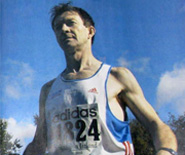CROSSED INTO JALISCO STATE, HOME OF MARIACHI MUSIC
Mariachi is a genre of music that originated in the State of Jalisco, in Western Mexico. It is an integration of stringed instruments highly influenced by the cultural impacts of the historical development of Western Mexico. Throughout the history of mariachi, musicians have experimented with brass, wind, and percussion instruments. In addition, sociohistorical factors have influenced the repertoire in terms of the performance of diverse regional song forms as well as the evolution of the performance attire. Mariachi is important to the study of Mexican music because, as an ensemble created during the colonial period, it found its essence during the postcolonial era, blossomed during the nationalist era, and has made a global impact in contemporary times. Throughout this development, particularly since the nationalist era, mariachi music has become emblematic of Mexican music by appropriating various Mexican regional song forms, experimenting in popular radio programs, appearing in the earliest Mexican films, and performing during presidential campaigns (Loza 1993, Turino 2003, Sheehy 2005, de la Mora 2006, Jáuregui 2007).
“The consensus of modern scholars is that the word mariachi is indigenous to Mexico. The now-extinct Coca language of central Jalisco is the most frequently cited as its probable source. Legend erroneously attributes the word to the French Intervention of the 1860s, explaining it as a corruption of the French word mariage, and citing a similarity between mariachi (or its archaic variant, mariache) and the French word for wedding. Historical documents prove that both the word mariachi and the ensemble it designates pre-date the French occupation of Mexico, making any similarity with the French word a phonetic coincidence” (Clark, 1996).
The mariachi ensemble generally consists of violins, trumpets, a classical guitar, a vihuela (a high-pitched, five-string guitar), a guitarrón (a large acoustic bass guitar) and, on occasion, a harp. The musicians dress in silver-studded charro outfits with wide-brimmed hats. The original Mariachis were Mexican street musicians or buskers,[1] but many today are professional entertainers making paid appearances in the entertainment industry. Professionals can usually play more than one instrument, and all can sing. They sometimes accompany ranchera singers such as Vicente Fernandez or even pop star Luis Miguel. Although ranchera singers dress in a traje de charro (Charro suit), they are not considered mariachis. Mariachi music, as well as other forms of traditional Mexican music, is also noted for the grito mexicano, a yell done at musical interludes within a song, either by the musicians or the audience.

Mariachi Herencia Mexicana singers Celia Correa, formerly of Laredo, and Robert Vidaurri from San Antonio perform on March 20, 2010, in Zapata, Texas
Although mariachis play at events such as weddings and formal occasions such as a quinceañeras (a girl’s fifteenth birthday celebration), they are often used to serenade women because many of the songs have romantic lyrics. Trios of mariachis may be found for hire to seranade; the best known venues are the Plaza de los Mariachis in Guadalajara and the Plaza Garibaldi in Mexico City). Mother’s days are also a popular occasion for mariachis. Prices vary immensely and are seldom cheap.
Foreign tourists often confuse mariachis with other types of buskers seen in Mexico, such as the jarochos, typical of the State of Veracruz, or “norteño” bands, which come from the Northern states of Mexico. The term Mariachi refers only to musicians who dress and play in a style typical of Jalisco, though the style and music has spread far. Usually a guitarrón and a vihuela must be present for a group to be considered mariachi.
TO READ THE WHOLE ARTICLE PRESS > HERE













October 12th, 2011 at 10:54 am
Muchas gracias, artículos tan bonitos como el suyo nos animan a seguir trabajando.